Sumer was an ancient Mesopotamian civilization of the Fertile Crescent region between the Tigris and Euphrates rivers.
The earliest known human settlements in Sumer dated back to around 4000 B.C.
However, no concrete evidence was found assuming the regime lasted almost 2000 years before Babylonian invasions were ruled legal.
Legal was the Sumerian term to describe their priest ruler who exercised divine authority, and interestingly a woman was also included in the list of such rulers.
Gilgamesh, Mesannepada, and Elulu were some of the famous Sumerian kings.
The cities like Nippur, Lagash, Eridu, and Kish had more than 8000 residents settling with the defensive walls constantly at war and were governed by the kings as per the Sumerian kings list inscriptions.
Sumerians were highly influenced by their religion and believed they ruled the cities by God through priest-kings.
The top 10 famous Sumerian kings are listed below:
10. Gilgamesh of Uruk
Content
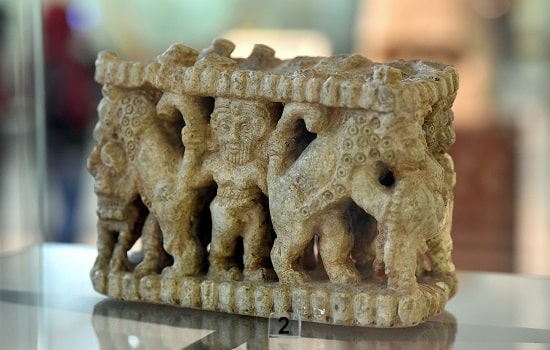
Gilgamesh was an ancient Mesopotamian mythological hero found in the great masterpieces of cuneiform literature.
He was mentioned in the Epic of Gilgamesh of the Akkadian vernacular as the odyssey of a king who did not want to die.
Gilgamesh was born to a priest King Lugalbanda and a Sumerian goddess mother, Ninsun.
It was thought to have possessed supernatural powers to sustain on the earth for a relatively extended period (around 126 years).
He ruled Uruk from 26 century B.C.E as the fifth king, who king Shulgi of Ur later linked as his brother to strengthen his reign in people’s eyes.
Gilgamesh, also referred to as Bilgames in Sumerian tongue, was closely related to Duzumi from the poem “the Descent of Inanna.”
He was found inscribed in several literary works, such as “Gilgamesh and Akka,” which explained the victory of Gilgamesh over his overlord Akka.
Similarly, in “Gilgamesh and Huwawa,” Gilgamesh slew a giant Huwawa after encountering the cedar mountains, “Gilgamesh and the bull of heaven “tackled about his valor upon slaying a bull sent by heaven goddess Inanna when Gilgamesh refused the amorous advances of the Queen of Heaven.
Gilgamesh was a wise man regarding all matters, enduring a journey to find peace and oppressing his people.
He was unaware of his potential as a semi-deity, accompanied by Enkidu, his wild animal-like companion who later transformed into the wisdom of God.
9. Mesannepada of Ur
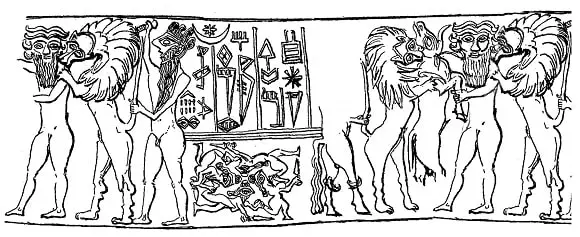
Mesannepada was the first king enlisted as the king of the First Dynasty of Ur in Sumer, who ruled for almost 80 years.
According to the inscriptions found at the Ur and Tall al-Ubajid and the Lapis-Lazuli beads found in Mari, Mesannepada was a young man chosen by God Ana.
His reign flourished across Sumer during 2500 B.C and was recognized as the King of Kish engraved in the royal seals found at the Royal Cemetery at Ur.
Lapis-Lazuli beads found at Mari provided further information about king Mesannepda being the son of Meskalamdug in the so-called “Treasure of Ur.” Mesannepada offered a lapis-lazuli bead to God Lugalkalama.
He married Nanbenda, with whom he bore two sons: Meskiagnuna, who succeeded Mesannepada, and Anapada, who was not listed under Sumerian kings but in the royal inscriptions.
King Mesannepada was known to have built the temple of Enlil at Nippur as per a Tumal epigraph.
He was entitled to founding the city of Ur, which was the central trading hub for the era that was destroyed by Elemites around 2200 BCE
8. Enshakushanna of Ur
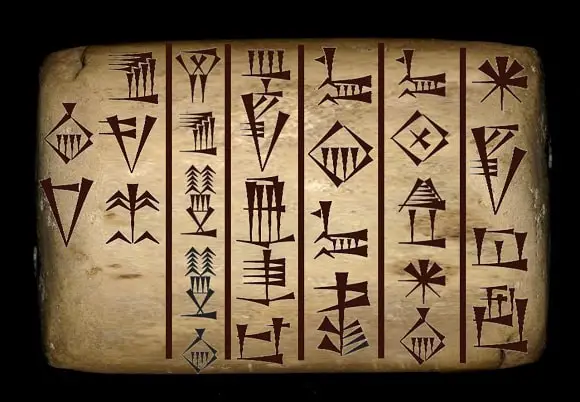
King Enshakushanna was a Sumerian king around mid-3rs millennium B.C who was thought to have governed Sumer for 60 years.
He adopted the title “Lord of Sumer and king of all lands” and later “King of Sumer and Akkad” to elevate his reign all over Mesopotamia.
Enshakushanna was well-known for his military campaigns directed against Kish and Akshak, engraved in a stone bowl in Nippur.
He sacked the city of Kish and captured Enbi-Ishtar, the king of Kish. Likewise, he eventually destroyed both the cities and the Kish and Akshay leaders.
Enshakushanna dedicated statues, metals, lapis-lazuli beads, and all the treasures acquired from the cities to the God of Enlil at the temple of Nippur.
Dedication tablets at the State Hermitage Museum in Russia have been entitled to King Enshakushanna, who states he was the son of Elina, the most probable king of Ur.
Enshakushanna was succeeded by Lugal-zage-si, who later allied with Entemena against Lagash’s sole rival, Umma.
7. Lugal-zage-si of Uruk

Legal-zage-si succeeded king Enshakushanna of Uruk and came to power as the ruler of Umma.
He was a high priest of Nisaba, the last Sumerian king per Sumerian kings list before the conquest of Sumer by Saron of Akkad.
He was credited with unifying several small cities of Sumer like Ur, Larsa, and Girsu into a single empire.
Legal also triumphed over a long-standing conflict with the city of Lagash and Umma for the fertile lands of Gu-Edin.
Legal-zage faced great difficulty conquering Lagash as his soldiers had to undergo ferocious combat that was usually unseen in Sumerian warfare.
Sumerian temples were plundered, set ablaze, and silvers and lapis-lazuli were bundled off. Historians condemned Lugal zage for violently shattering cities, blasphemous attacks in temples, and marauding treasures.
During his reign, he invaded Kish overthrowing Ur-Zababa, Larsa, and Uruk, the capital of Sumer and was said to have a pleasant livelihood.
The lands were resting contently amid rivers and merry under him; however, historians refer to his campaigns as nothing more than successful raiding.
Unfortunately, Lugal-zage was defeated by a man named Sargon of Akkad after the devastating walls of Uruk that led him to neck stock at the temple of Nippur.
The Nippur vase contained inscriptions carved by Lugal-zage about his insurrections and the substantial food offerings made to Enlil at Nippur asking for additional life.
He stated himself to be a proud shepherd dedicating the vase to his master Enlil.
6. Meskiagnun
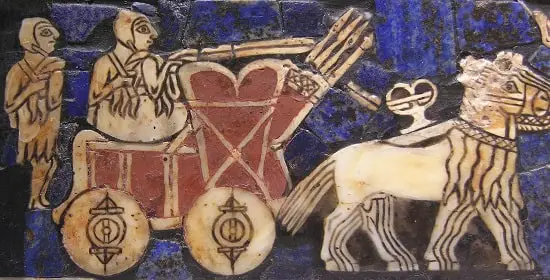
Meskiagnun was the fourth king of the First Dynasty of Ur, as per the Sumerian kings’ list, who ruled for almost 36 years. He preceded Annaepada and was succeeded by Elulu during 2600 B.C.E.
He was mentioned in two bowl inscriptions dedicated by his wife, Gan-Saman.
In addition, in the Tummel inscriptions, Meskiagnun was quoted along with his father Mesannepada to restore the Tummal shrine to Enlil and Ninlil shrine to Nippur after they were ruined.
The Iri-nanam was built by king Enmebaragesi in Enlil temple, flourished in Tummal, and was brought to Ninlil primarily.
But Tummal fell into ruins, so Mesannepada rebuilt Enlil temple, his son Meskignun flourished the Tummal again, bringing Ninlil back to Tummel.
The Sumerian kings’ list clearly stated that Meskiagnun and his father Mesannepada ruled Sumer between king Enmebaragesi and king Gilgamesh.
However, some chronological errors were found that remained unresolved.
5. Elulu
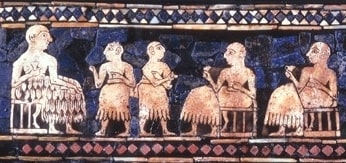
Elulu was the third king of the First Dynasty of Ur of Sumerian civilization. He ruled across Sumer for around twenty-five years per the Sumerian kings’ list.
King Balulu succeeded Elulu and preceded Mesh ki and Nanna in around 26 century B.C.E.
He was mentioned in an inscription as “king Elulu, of Ur” nearby Eridu. The latter built the Abzu ziggurat for Enki.
As per Sumerian and Akkadian mythology, the Abzu was an underground freshwater aquifer that was blessed to let lakes, rivers, and ponds draw out water from it.
People believed that the Sumerian God Enki lived in the Abzu before creating human beings that were a symbol of holy water.
Historians linked Elulu with Elillina, who was thought to have been the father of king Enshakushanna as per a dedication tablet by Enshakushanna himself.
However, chronological facts do not reasonably support the fact.
4. Enmebaragesi
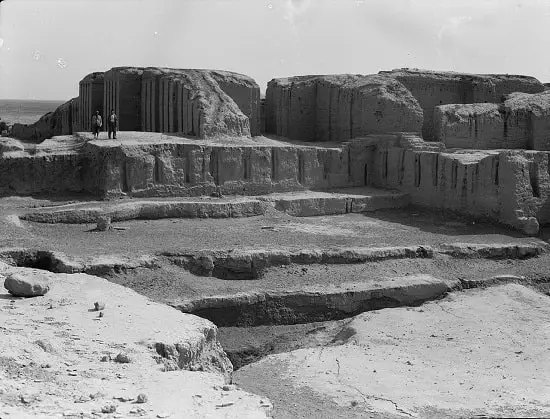
Enmebaragesi was a Sumerian king of the first dynasty of Kish, whose reign was thought to have extended for almost 900 years.
He ruled from Early Dynasty 1(2800 B.C.E) till Early Dynasty 3 (2600 B.C.E), which remained an arguable topic due to the very long span of his reign.
A book named “Royal Statuary of Early Dynastic Mesopotamia” described Enmebaragesi as unrelated to the royal clan; however, one of the inscriptions symbolized him as a king.
He succeeded IItasadum and led a prosperous campaign against Elam, an ancient civilization located in the far western region of present-day Iraq.
In the Sumerian kings’ list inscriptions, Enmebaragesi was mentioned to have destroyed weapons of Elamian lands.
Likewise, Kish kings dominated entire Babylonia and northern territories like Nippur and Eresh, legitimizing their kingship all over Sumer.
Dumuzid of Uruk succeeded Enmebaragesi; however, a contrary shred of wordings hinted at Dumuzid being held captive by Enmebaragesi.
Historians have revealed that four inscriptions were named after Enmebaragesi, dating back to Early Dynasty 1.
One of the engravings indicated him as a king, symbolically representing an armchair sign of Kish having horns of aurochs at graphene in Baghdad.
Similarly, a vessel in Khafajah also mentioned him, which clearly does not describe him as a king.
He was ascribed as the father of Aga and the pioneer of temple construction as per the Sumerian kings’ list and the Tummal inscriptions.
3. Enannatum
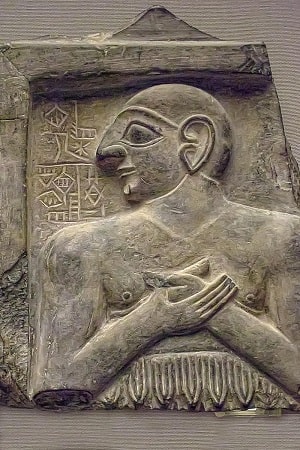
Enannatum was the ruler of Lagash who succeeded Akurgal during 2500 B.C.E. He was renowned for establishing a verified empire and setting a defined border for his lands.
Enannatum destroyed Elam, the city of Susa, and expanded his territory across Sumer and Akkad, including Nippur, Ur, Akshak, and Uruk.
He even got into a dispute with Umma for the sake of the fertile plains of Gu Edin. He ordered a canal to be carried to Gu Edin from the great river inscribing a stele at the canal.
The stele was a monument erected to symbolize victory over Ush, ruler of Umma, of fragmented limestone standing 1.80 meters high.
Enannatum opened the field of Ningirsu within 210 spans of power to Ush on the border with an order of the royal field not to be seized.
He even built a safeguarding structure on the border of Ningirsu along with a sanctuary of Enlil.
Furthermore, men of Umma were penalized for eating harvested grains of Nina, goddess of Oracles, so they repaid him with 144,000 gur of grains filling a great storehouse.
He recorded his victories on stone inscriptions that showed his devotion toward Enlil.
Enannatum built several temples, canals, and palaces and reinstated the city of Nina, Nineveh in Lagash, despite the rise of frequent waves of revolts within parts of his lands.
2. Urukagina of Lagash

Urukagina was the king of Lagash and Girsu of Mesopotamia during the 24 th century B.C.E. He succeeded Lugalanda. He was best known for the reforms he brought to overcome a social obstacle, “corruption.”
The king was represented in a terracotta figure seen carrying a shepherd’s flail as an indication of authority, standing in front of an offering table in the city of Ur.
Neither did Urukagina belong to royal descent, nor did his wife Shasha, the sister of a chief herdsman.
He was the pioneer of bringing legal codes into recorded history as he exempted widows, children, and the homeless from all kinds of taxes.
He made sure to speak up for the rights of the poor regarding trade with people of a higher class in society.
Urukagina’s legal codes were a perfect fit for governing society with equality and liberty, limiting the potential of priesthood and making strict enforcements against hunger, theft, and murder.
Despite the limitations toward influential people, society did not mitigate autocracy during his reign. Elite-class people enjoyed a greater extent of power and prestige than previously.
He also reformed funerals as a corpse brought to the grave had to offer three jugs of beer and 80 loaves of bread as funeral tax.
Urukagina participated in conflicts with Uruk, unfortunately losing its lands to Lugal zage si of Umma, who later unified the entire Sumer as a single nation.
1. Dumuzid the fisherman

Dumuzid was a Sumerian king of the First Dynasty of Uruk, per the Sumerian kings’ list. He preceded Lugalbanda and was succeeded by king Gilgamesh.
He was one of the rulers in Sumer whose reign stayed for a more extended period as, during the one-hundredth year of his kingship, Enmerbaragesi held him captive.
Duzumid originally belonged to Kuara, who was confused with a Sumerian deity, as mentioned in Tammuz.
As per historians, Dumuzid was assigned as a fisherman, and his origins from Kuara were mentioned to distinguish him from the God Dumuzid.
Conclusion
The Sumerian civilization that flourished in southern Mesopotamia in present-day central Iran underwent a series of reforms under numerous rulers like Gilgamesh, Dumuzid, and Urukagina.
Smaller fragmented cities like Niggur, Girsu, and Lagash were unified into a single Sumerian nation which was talked about in inscriptions engraved within stones, vessels, and stone bowls.
Not just annexation, monuments of religious importance, social reforms including funeral taxes, the elevation of the status of lower-class people, and abstinence from corruption were also significant activities Sumerian kings brought about.
